Image – Artem Bali (https://unsplash.com/@belart84)
As a runner, I have worried a lot for my knees. My yoga practices have been majorly about keeping them injury free. But then a lesson came through an injury and I understood how weak hips are a major source of running injuries! I have to equally worry about the strength and stability of my major hip muscles or else I am in for recurring injuries. Hip flexor exercises are a must for every runner.
A Runner’s Connect article, defined the issue well – Tight or weak hip abductors can lead to too much tilting of the pelvis which means the runner has to bend their leg more than usual at the knee in order to make up for the lack of lift. This gradually leads to the much dreaded IT Band Injury in runners.
So here is my way of dealing with tight hip flexors. Yoga! Because Yoga is gentle, especially for very stiff runner bodies and beginners who want to graduate to proper strength training and not get injured in the process. The single dead lift squat, the clam, the hip drops – they are all one way of dealing with it and then there is the yoga way. Having been on both sides of the game, I especially recommend Yoga before you hit the gym for the big things. You can include these anytime in your routine.
- Extended Side Angle Pose (Parsvakonasana) – An ababsolutely brilliant one for tight hip flexors! Most sports injury clinics recommend this. In the extended triangle pose the main thrust is on the “glutes maximus’.
- The bending knee stays soft. The unbent leg is where you work on the rotation and not letting the knee drop even for a second. Actually that is the side work that goes on for every warrior pose.
- Then refine the position of the kneecap,. It strengthen sthe hips as you move along the arm.gluteus maximus are the focal point of the stretch.
- To be done on both sides with maximum stretch and foot stability.
- The Low Lunge (Anjaneyasana) – I call it glute-activating pose. Remember that this is a lunge and requires major work of the gluteus muscles to stay upright. While you can see me in action on the pose, here are a few reminders:
- You begin this pose with the mountain pose (or the downward dog pose).
- Gradually move into the pose with the right knee bending 90 degrees
- Remember to un-tuck your left foot’s toes.
- Resting your lower knee on the mat allows you to focus on the stretch
- The more you thrust downwards, the better balance you get
- As you try to take your torso up and slightly backward, do not forget to inhale!
- The head has to look up. Don’t stress your back.
3. Pigeon Beginner & Intermediate (Kapotasana) – Pigeon pose family is the family of hip openers and strengtheners. As beginners, always use your arms for support. You will end up feeling sensations in the hip – and that’s because there is a lot of stretching and strengthening work going on there. The hip flexors will be activated. However you must stop as soon as you feel sensation in your knee. I’ve included the advanced version as well.
- Start with the downward dog and then slide your right knee forward so that the thigh bone and knee are directly in front of its hip socket.
- In your back leg, check that the foot is lying flat and is in line with the hip socket. At least, try.
- Now get into a forward bendand walk your hands forward.
- As you do the forward bend and try to touch your head on the floor, keep your shoulders relaxed, back leg pulling you back and the hips pulling your towards the front.
- Extend your arms as much to the front you can. No strain on the neck. Stay there, enjoy.
- Remain here for ten slow steady breaths
- Camel pose (Ustarasana) – This beginning variation allows you only to go back as far as it is comfortable for you. You may or may not touch your ankles.
- Your gaze has to be at the ceiling while you are in the pose.
- Draw your shoulder blades firmly into your upper back.
- If you feel comfortable here, you can lean your upper body back a couple of inches more.
- Keep your hips drawing forward
- Stay there for 10 breaths. To release, slowly bring your hands to your hips and lift your upper body. Do make sure that your head comes up last!
This paragraph from the Yoga Journal sums up the work on hip mobility very well
” Your hips are the central hub of movement in your body. When they’re tight, it’s like wearing a pair of pants that are a size too small—the reduced range of motion in your hips, hamstrings, and spine creates discomfort. Opening this region increases the efficiency of the circulation to your lower extremities, provides better range of motion, and will help you feel more at ease during meditation and in seated postures.”
Feedback – Welcome!

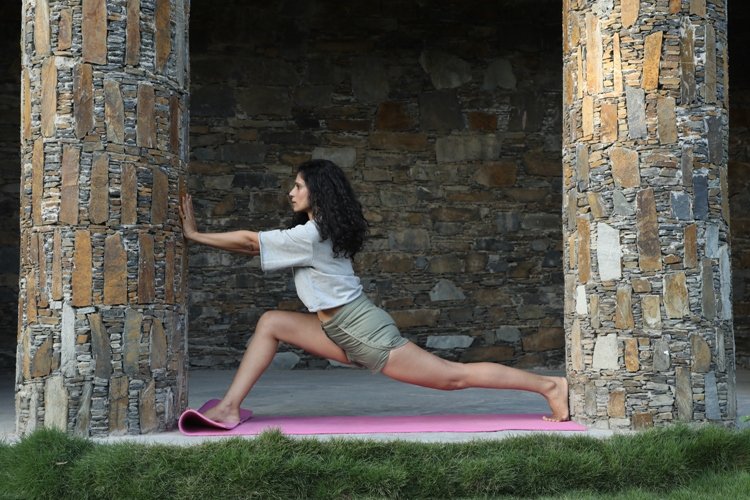
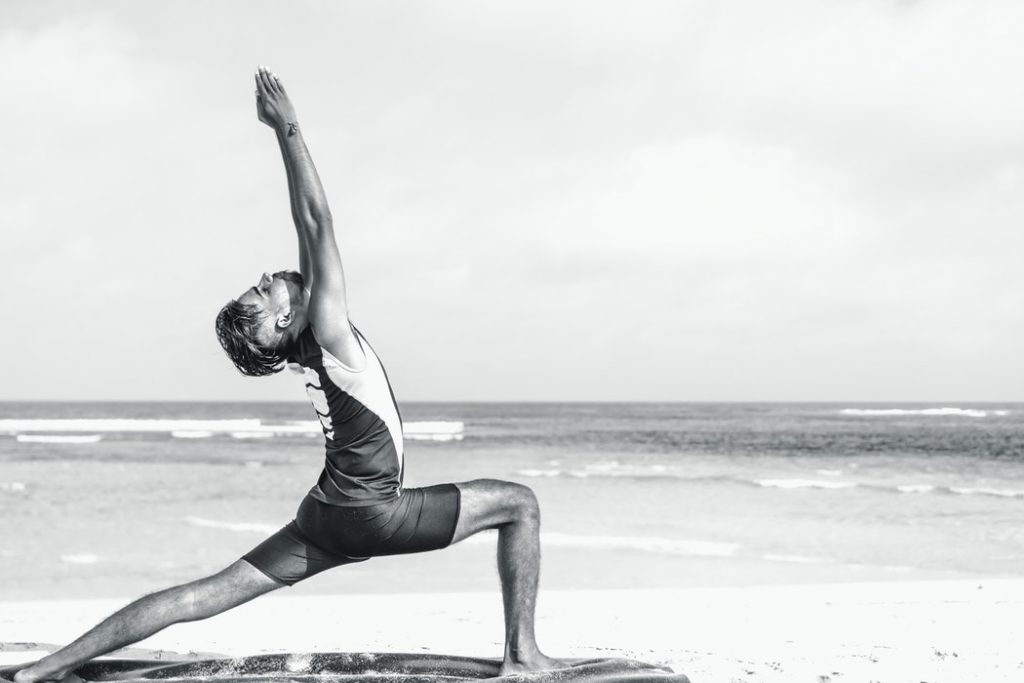
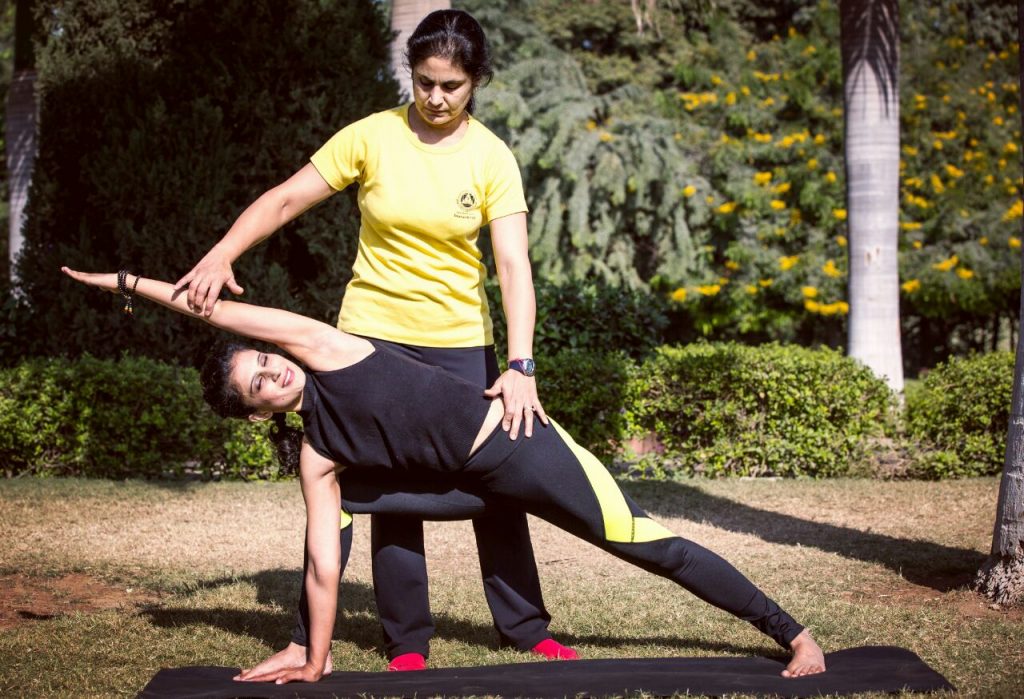
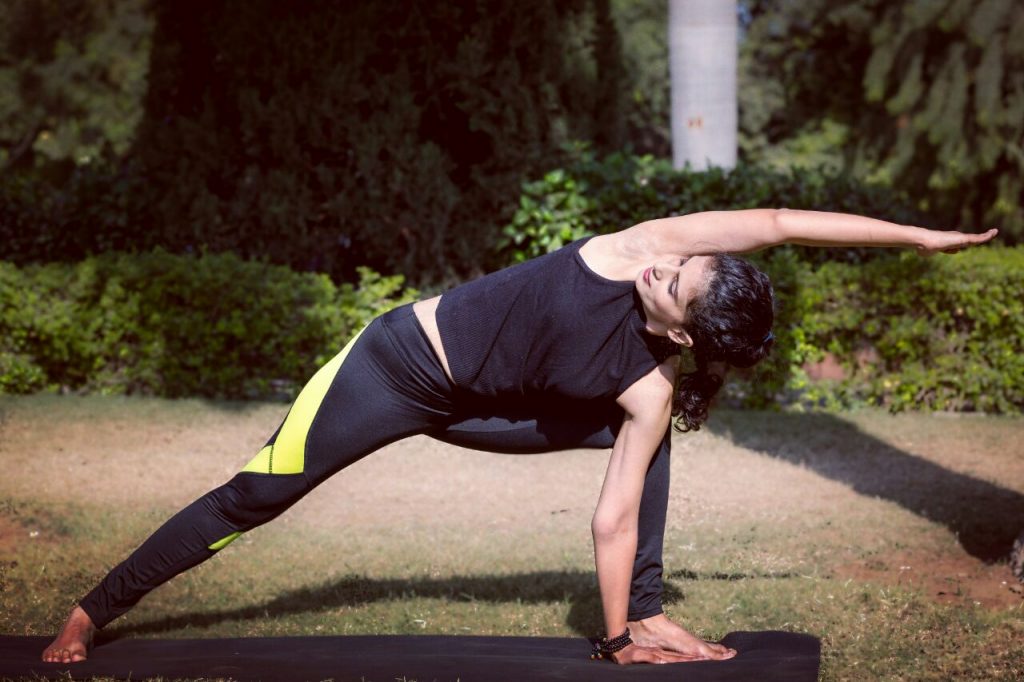
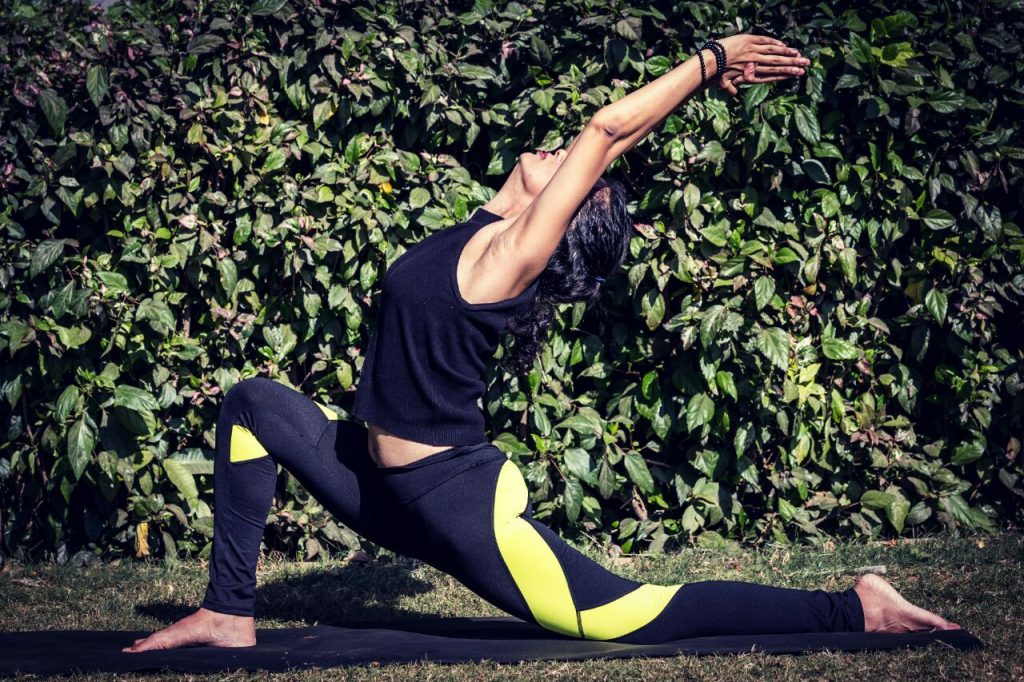
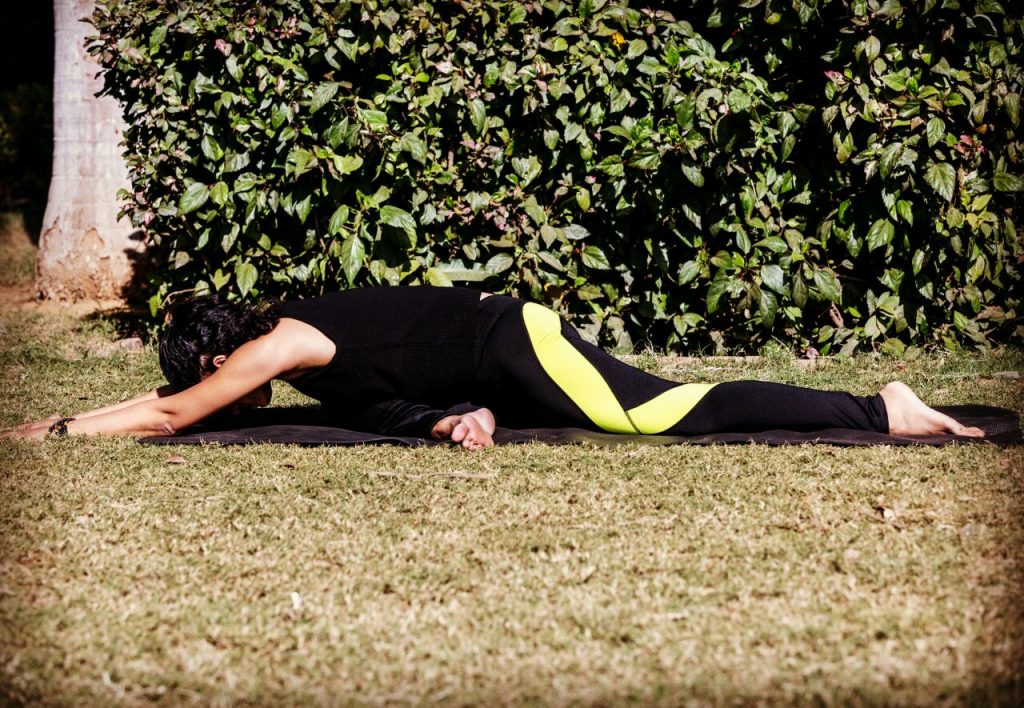
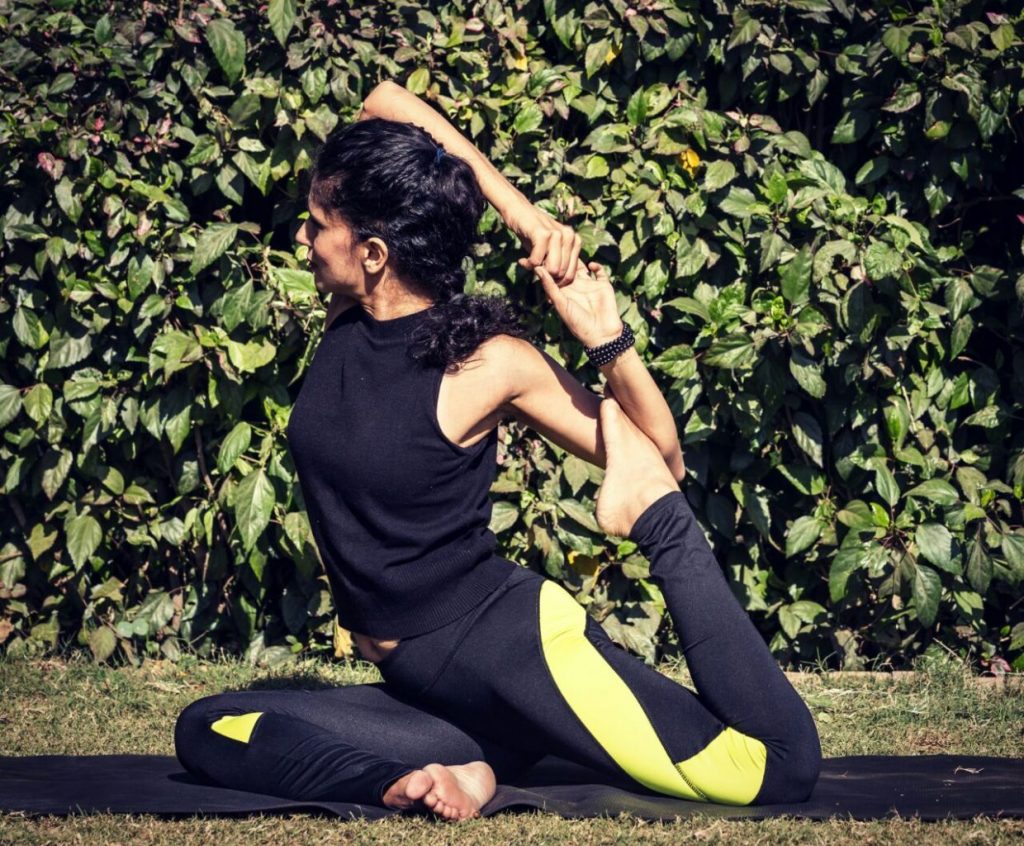
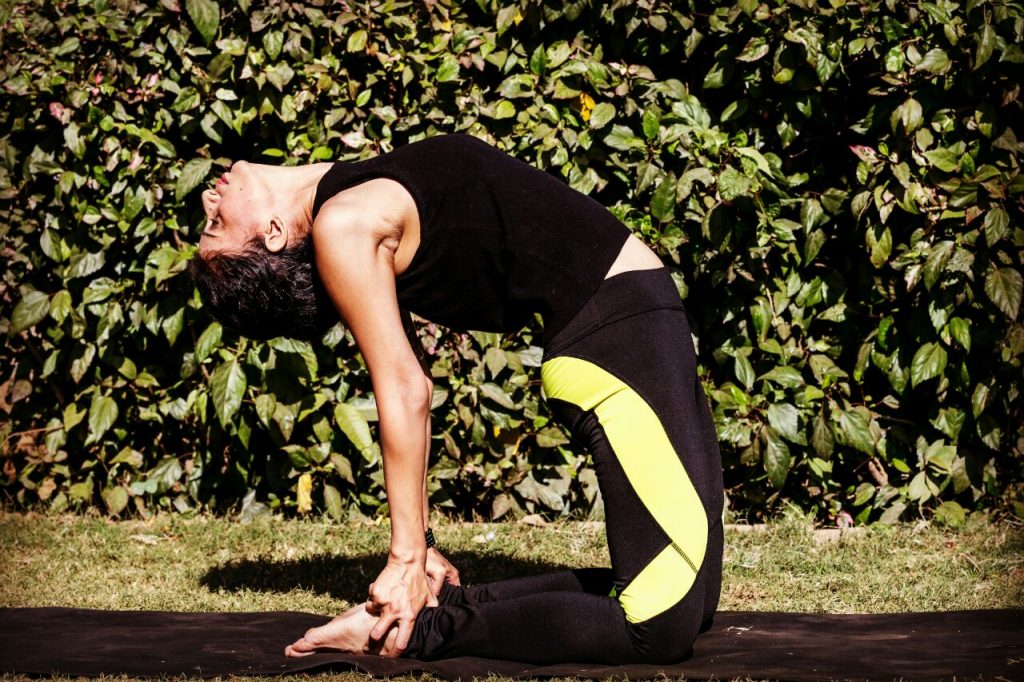
7 comments
Excellent stretches all these poses give you.. have kept myself sans injuries thanks to this routine… thanks Tanya for the such vivid detail. I’m sure it will help all of us runners get stronger , better and definitely injury free.
Much needed info working on my right hip flex as it’s troubling me after 17 k while doing the half .. surely going to do above stretches from today .
Always follow ur post ma’am. Thank you
Good Article…keep writing!
The best thing someone can do for themselves in their life is Yoga, strongly recommends!!
For your info Ma’am, I am into Yoga since many years. This has helped me a lot. Even a set of 12 sun Salutations in the morning prior to running is also more beneficial than any hectic schedule… Many more Postures can be practiced later.
thanks
Excellent article, i need it for my rehabilitation